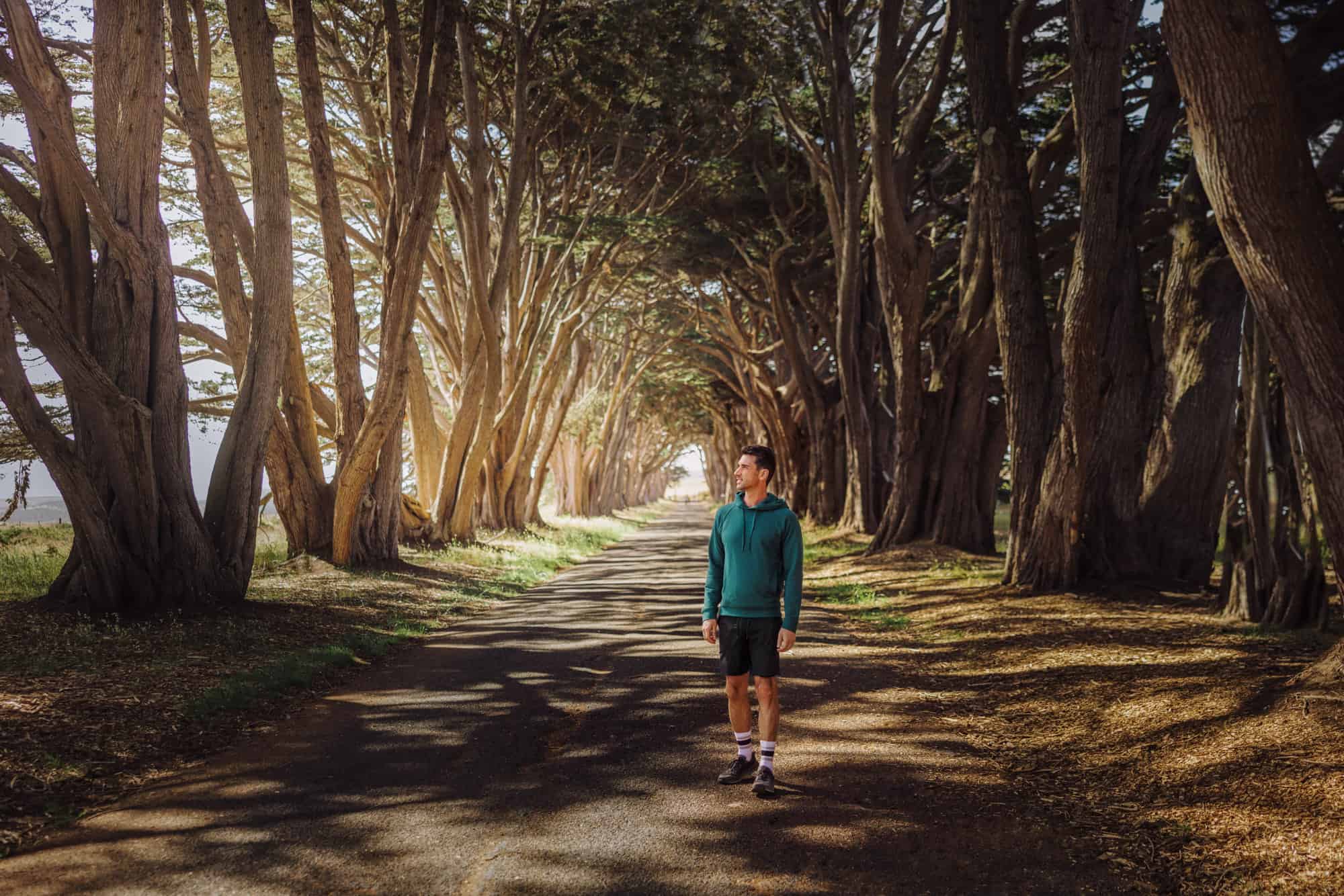The Cypress Tree Tunnel: A Scenic Stop at Point Reyes

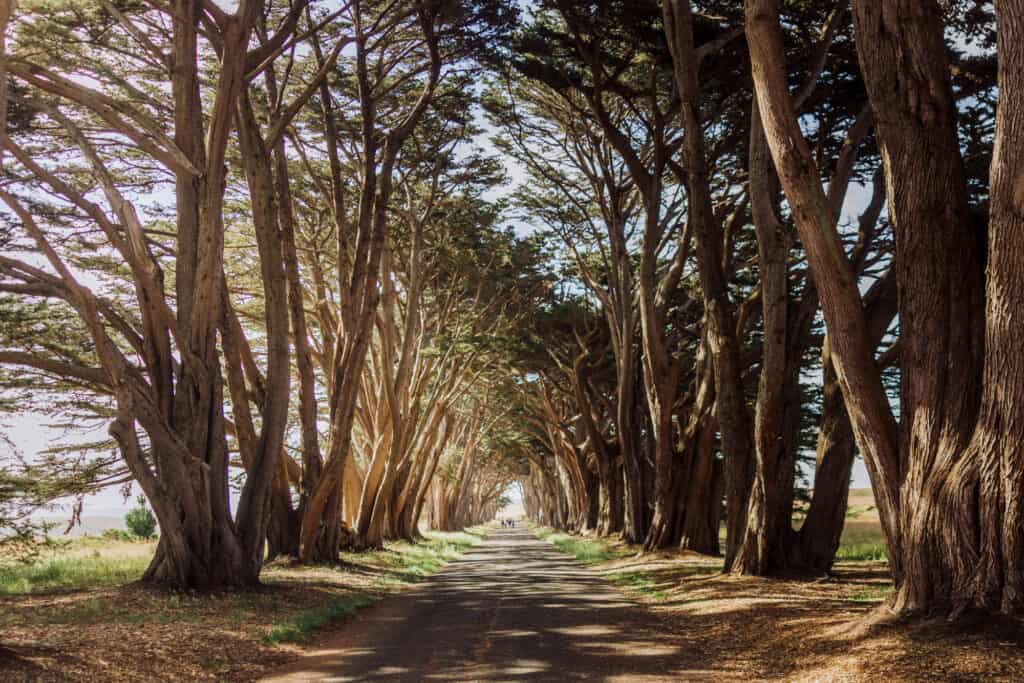
BY JARED DILLINGHAM
THE CYPRESS TREE TUNNEL AT POINT REYES NATIONAL SEASHORE
If you’ve spotted photos on social media of a long walkway, encompassed by towering cypress trees and wondered if it truly exists… it does!
Known, appropriately enough, as the Cypress Tree Tunnel, you can find it at the Point Reyes National Seashore in Northern California. This area, which is a nice day trip from San Francisco, is free and open to the public to explore and enjoy.
➡️ CLICK TO BOOK: Tour of Point Reyes from San Francisco
Directions to the Cypress Tree Tunnel
The Cypress Tree Tunnel is situated in the Point Reyes National Seashore, a protected area on the Point Reyes Peninsula in Marin County, California.
It’s approximately 45 miles north of San Francisco’s Golden Gate Bridge. The drive to Point Reyes will take between one hour and two hours, depending on traffic.
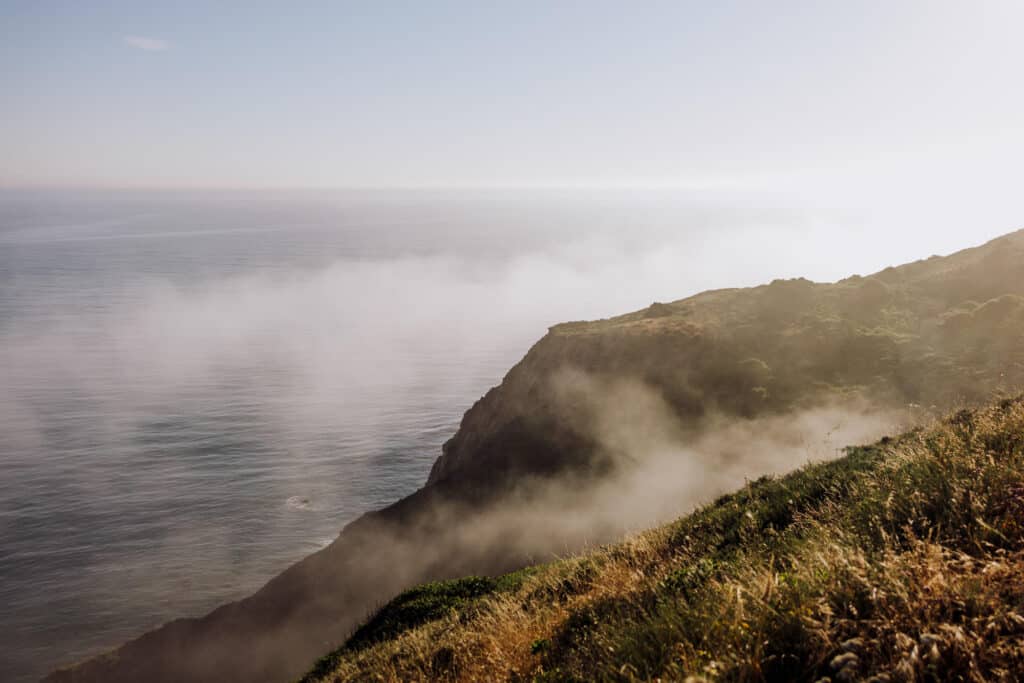
The Cypress Tree Tunnel is along the two-lane, windy road that goes through the park (Sir Francis Drake Blvd). It’s easily accessible by car.
How to Get to the Cypress Tree Tunnel
From the Bear Valley Visitor Center:
- North 0.2 miles to Bear Valley Road.
- Left on Bear Valley Road 1.75 miles to Sir Francis Drake Boulevard.
- Left on Sir Francis Drake Boulevard 9.5 miles.
There’s no hike involved at all. The Cypress Tree Tunnel is literally right off the road.
The gate will likely be closed to the road that runs through the trees. Even if it’s open, members of the public can’t drive down through the tunnel of trees.
Parking options are fairly limited. While there’s no designated parking lot, you should find plenty of roadside parking.
Map of the Cypress Tree Tunnel
You can simply put “Cypress Tree Tunnel” into Google Maps, and the location pops up.
Keep in mind: cell service is extremely limited at Point Reyes, so open the map with the tunnel’s location *before* you enter the park area.
History of the Cypress Trees
The Cypress Tree Tunnel is nearly a century old. The trees were planted in 1930.
The reasoning varies. Some say the trees were planted to serve as a windbreak. Others say they were a symbol of the prestige with which RCA treated its historic radio operation on site.
Monterey cypress trees have a distinctive appearance, with their dense, dark green foliage and twisted, contorted branches. They have a picturesque and sculptural quality, making them aesthetically appealing.
The cypress trees at Point Reyes have been shaped over the decades by the coastal weather and the wind.
The Cypress Tree Tunnel is maintained by park staff, who trim the trees when needed to keep them healthy and thriving as part of this historic part of the park.
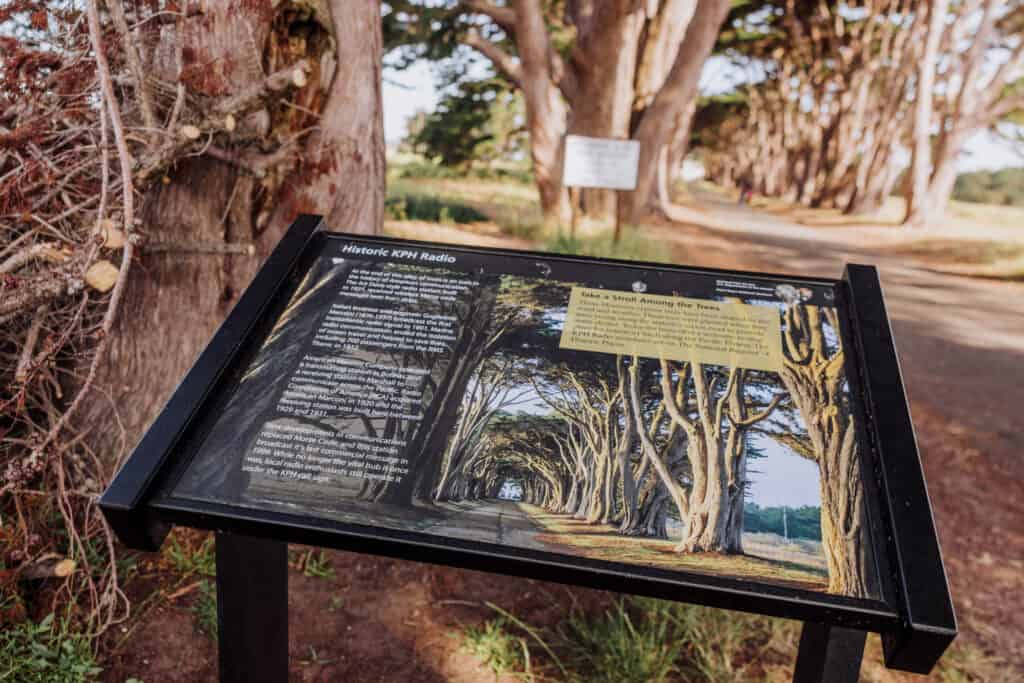
Advice for Visiting the Cypress Tree Tunnel
There’s a good chance you won’t have cellphone service at this spot, so make sure to plot it on your phone’s map app before entering the park.
A few other things to keep in mind:
- Download the National Park Service app on your phone. It’s free! Better yet, you can download the entire section on Point Reyes to use offline once you’re inside the park area without cell service.
- Make the Cypress Tree Tunnel your first stop of the day, especially if you’re going with photography in mind. While the walkway is accessible 24/7, getting there at dawn will help you avoid crowds.
- There’s no entrance fee to the park, and no reservation is needed.
- There are no bathrooms open to the public at the Cypress Tree Tunnel. The nearest restrooms are at Estero Trailhead or North Beach.
- Don’t climb the trees.
- Check the park’s restrictions before making the drive to Point Reyes. Severe storms have forced roads to close at times. Plus, tree maintenance closes the walkway briefly from time-to-time. You likely won’t encounter any issues at all, but it’s best to check the website before you go! To be sure, check the Point Reyes National Seashore’s “Current Conditions” website.
Photography at the Cypress Tree Tunnel
It’s the unique, stunning photography opportunities that draw most people to the Cypress Tree Tunnel!
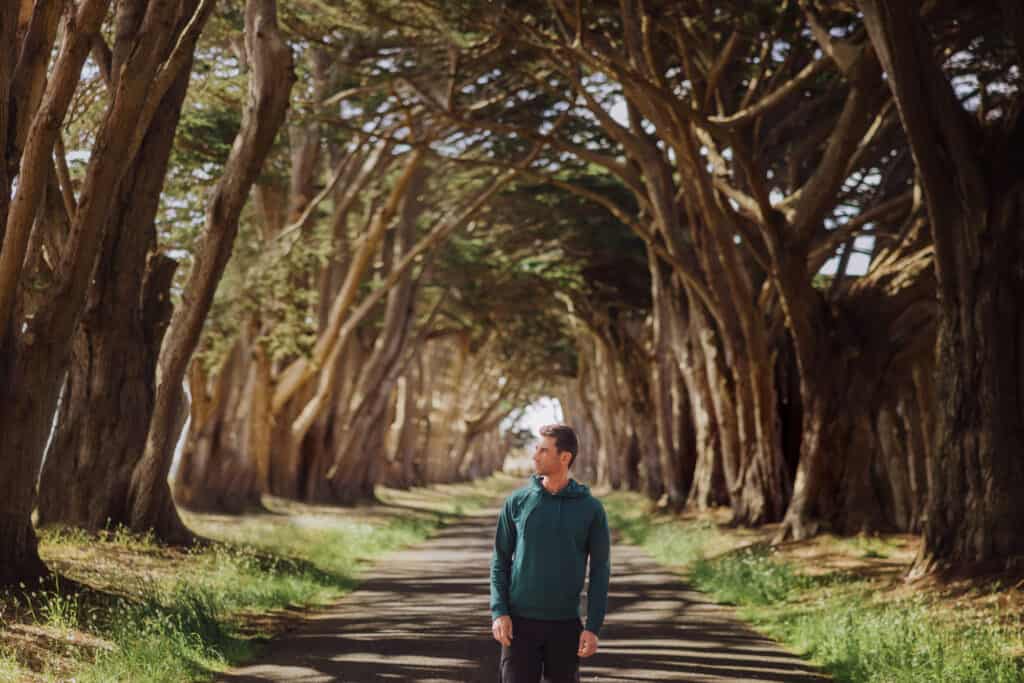
Here are a few things to keep in mind:
- The Point Reyes area is considered one of the foggiest places in the country. I think the fog only adds to the photos from this spot!
- As I mentioned earlier, arriving early in the morning (around dawn) is key to an enjoyable photography experience. The walkway is quite well-known, and draws a crowd during the day. While people can be edited out of your photos, it’s always easier if there *are no other people* on the walkway!
- It’s my opinion, but I think walking all the way down the walkway to the radio station and shooting back toward the road will provide the best angles for photography.
- Drones are not permitted at Point Reyes National Seashore. I’ve seen drone photography of the beaches here, and I think it’d be cool to fly through the Cypress Tree Tunnel … but … it’s off limits.
The Historic Radio Building at the End of the Tunnel
At the end of the walk through the Cypress Tree Tunnel, you’ll find the historic Art Deco-style radio station, built in 1931. The KPH Radio Building at Point Reyes stands as a reminder of the important role that radio communication played in maritime history.
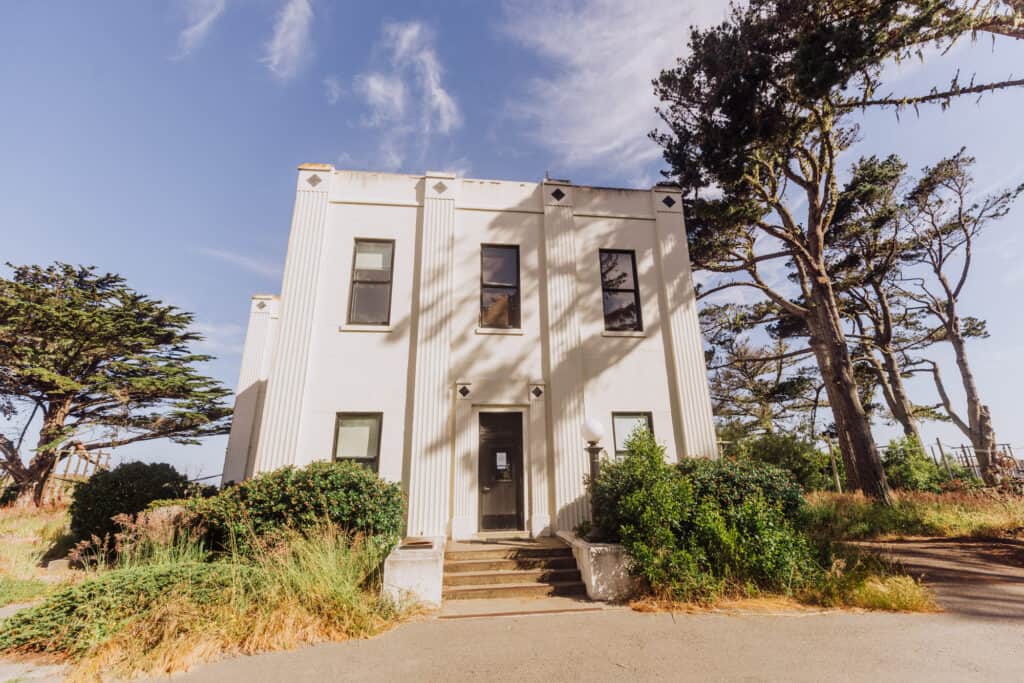
The radio building was part of the former coastal radio station known as KPH, operated by the Marconi Wireless Telegraph Company of America. KPH was a high-powered coastal radio station that provided communication services to ships and coastal stations. It played a vital role in transmitting and receiving telegrams, distress signals, weather reports, and navigational information across vast distances of the Pacific Ocean.
The KPH Radio Building is a two-story structure that housed the operations and equipment of the radio station. It features distinctive architectural elements and design reminiscent of the early 20th-century radio communication era.
While the grounds aren’t cared for, the building has been well-preserved and retains its historical charm.
The old radio transmission lines run through the fields all the way to the Pacific Ocean.
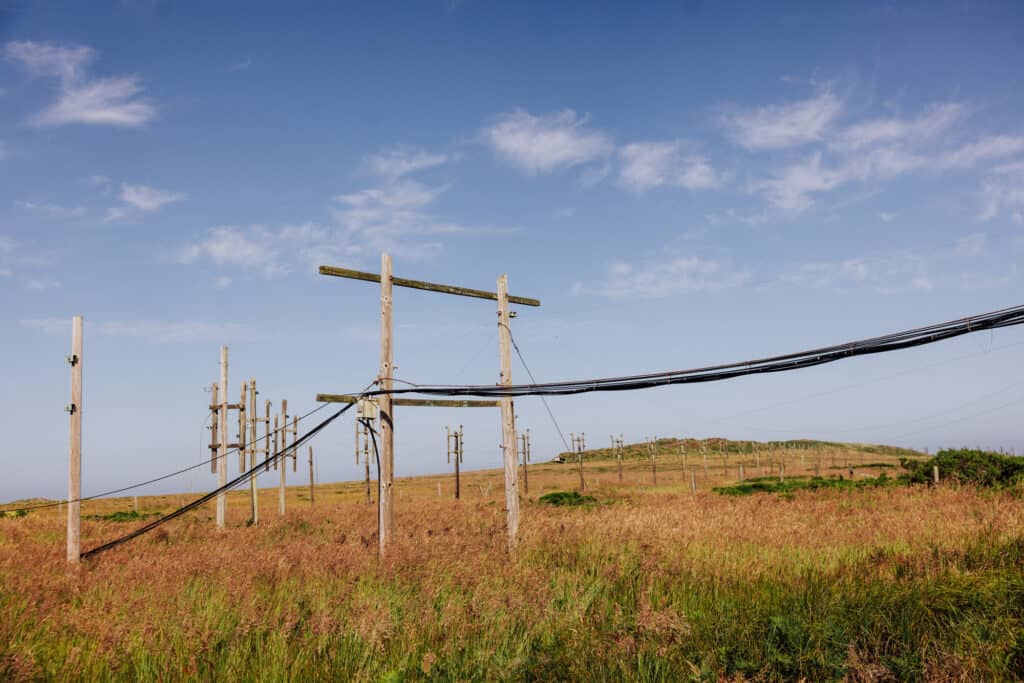
The KPH station was equipped with advanced radio technology for its time. It operated multiple antennas, including large curtain arrays and long-wire antennas, to transmit and receive signals. The building housed the control room, operator stations, and equipment necessary for maintaining communication with ships at sea.
The station broadcast its final commercial message in 1999.
The KPH Radio Building, along with other associated structures and equipment, has been restored and preserved by the Maritime Radio Historical Society (MRHS). The MRHS is a nonprofit organization dedicated to preserving the history of maritime radio communication.
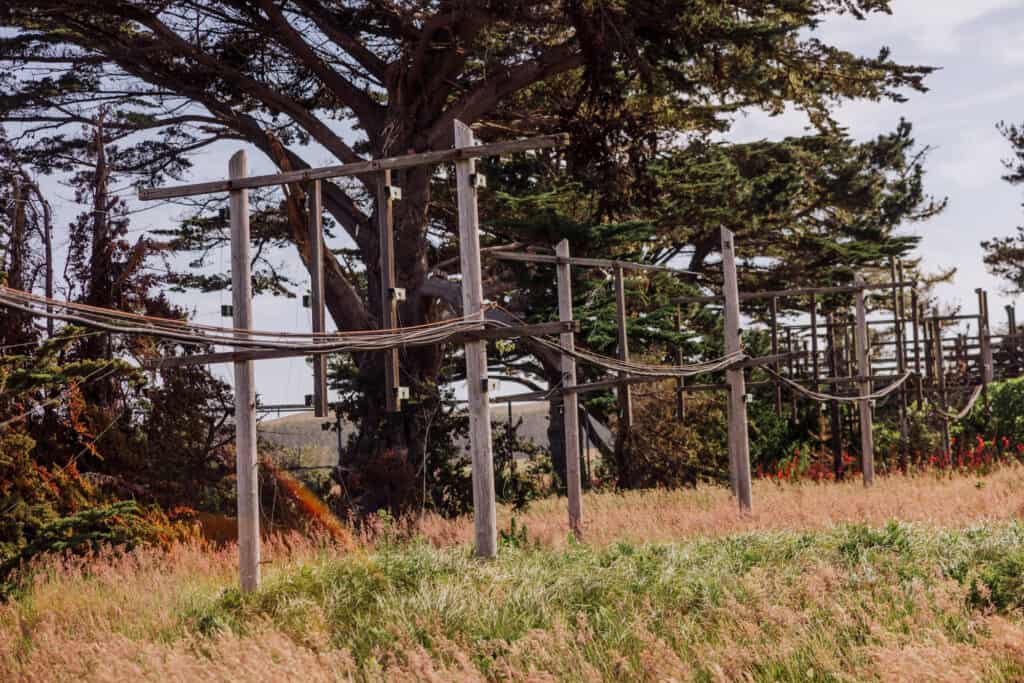
Tours of the Morse Code Radio Station
The KPH Radio Building is not generally open to the public for regular visits, but tours are offered weekly. Saturdays, between noon and 4:00pm, visitors can show up at the building for tours.
For more information, contact the MRHS by calling 415-990-7090.
Things to Do at Point Reyes National Seashore
Point Reyes National Seashore offers a diverse range of natural attractions. While it’s a great day trip from San Francisco, you won’t find it overly crowded. It’s a beautifully peaceful place along the California Coast!
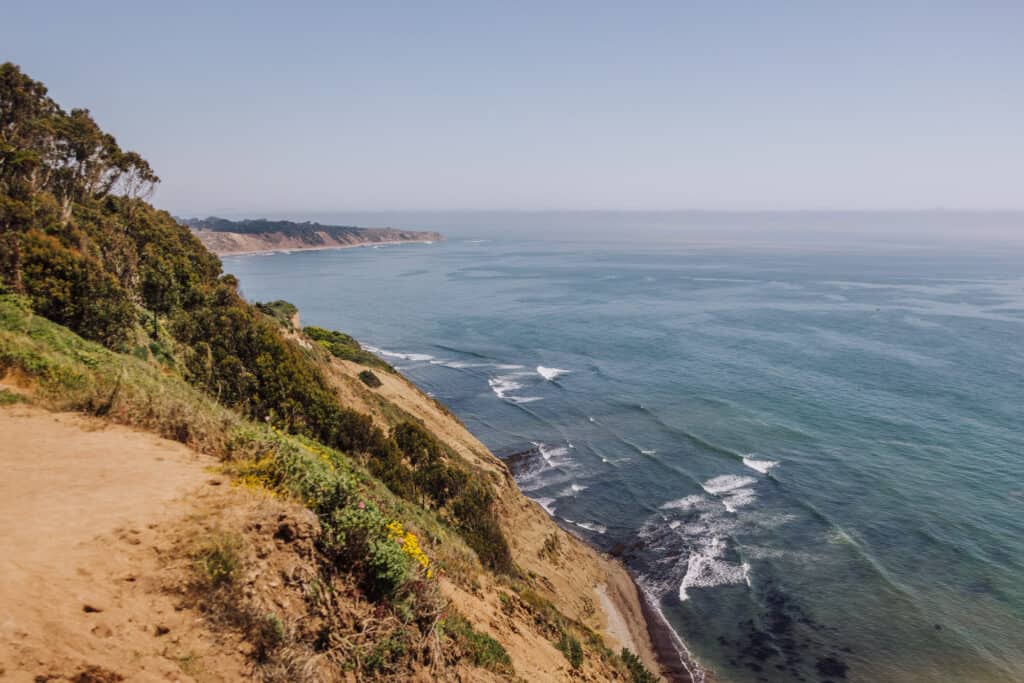
If you’re driving up from San Francisco to check out the Cypress Tree Tunnel, here are a few other sites to see:
- Point Reyes Lighthouse: The historic Point Reyes Lighthouse is perched on the westernmost point of the seashore. You’ll get panoramic views of the coastline, seals, and maybe a glimpse of a whale migrating at the right time of year.
- Tomales Point Trail: The Tomales Point Trail is a scenic coastal trail, with stunning views of the ocean and opportunities to spot wildlife, including elk.
- Chimney Rock: Chimney Rock is a beautiful site, particularly during the spring and summer when wildflowers bloom. It’s also an excellent spot for observing migrating gray whales.
- Limantour Beach: Relax and soak up the sun at Limantour Beach, a beautiful stretch of sand with dunes and coastal grasslands. A two mile walk down the sand will bring you to the interesting rock formations at Sculptured Beach.
- Alamere Falls: Take a 13-mile (roundtrip) hike to Alamere Falls, a rare coastal waterfall that cascades off a cliff onto the beach.
- Drake’s Beach: Drake’s Beach is known for its long, sandy shoreline, unique geological formations, and occasional sightings of elephant seals.
- Point Reyes Station: Explore the charming town of Point Reyes Station, known for its artisanal shops, restaurants, and the famous Cowgirl Creamery, renowned for its artisan cheeses.
- Tule Elk Reserve: Visit the Tule Elk Reserve, where you can observe a population of native tule elk, a subspecies of elk found only in California.
- SS Point Reyes Shipwreck: An old WWII-era ship, last used as a fishing vessel, has been a popular spot to check out. It’s been beached on the sandbar at Inverness (in Tomales Bay) for a couple of decades.
- Kehoe Beach Trail: This trail, and the beach it leads to, are popular with dog lovers and dog walkers.
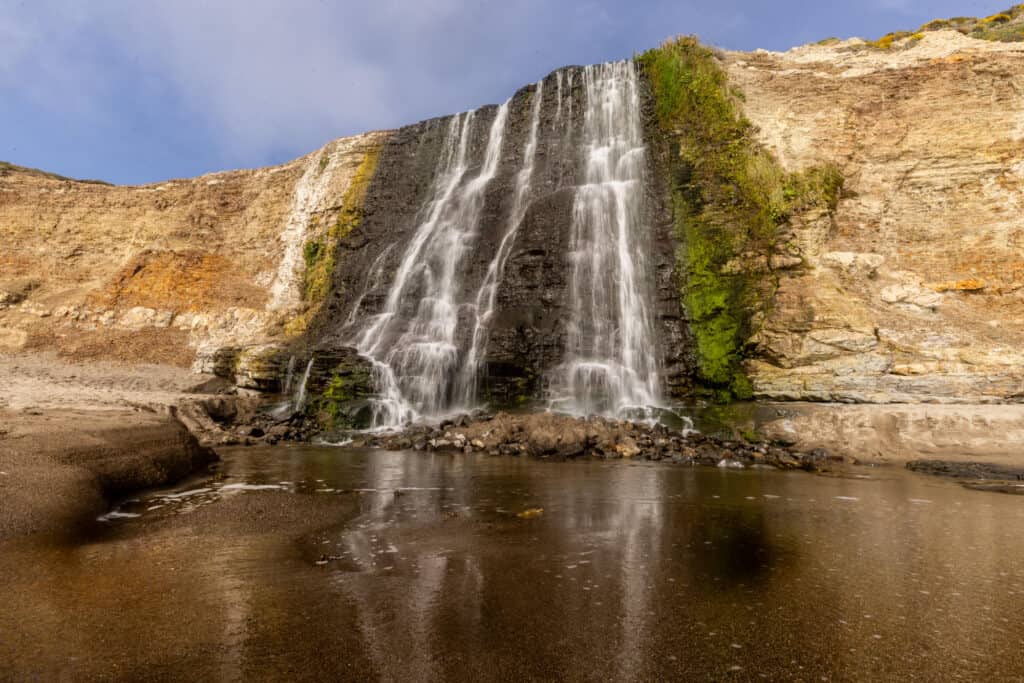
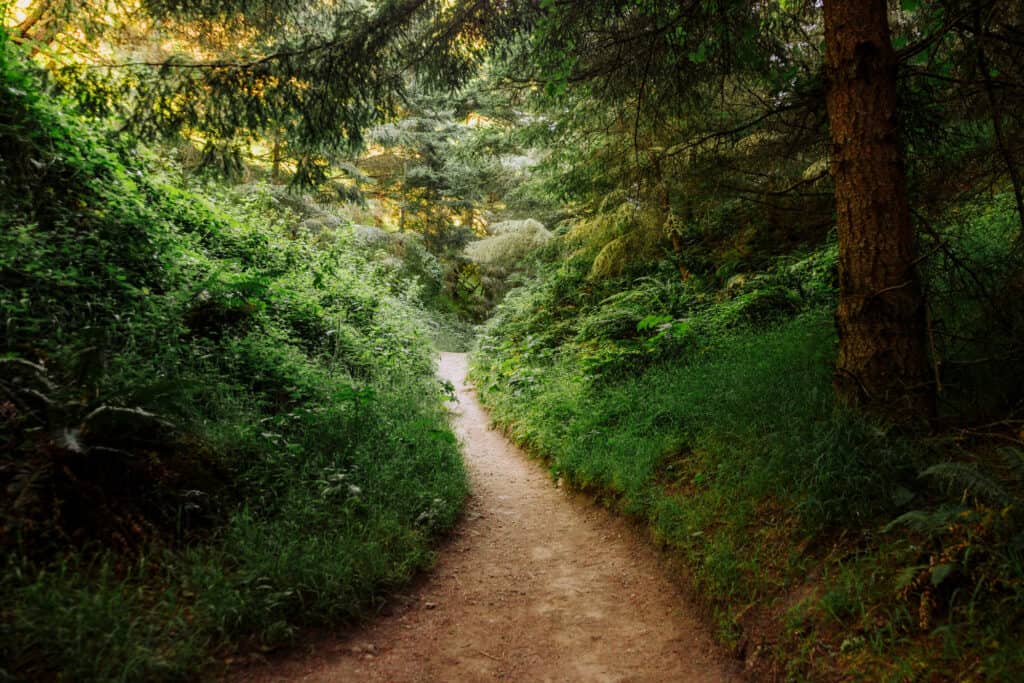
FAQs About the Cypress Tree Tunnel
Let’s tackle a few frequently-asked-questions about the cypress trees at Point Reyes.
When’s the best time to visit the Cypress Tree Tunnel?
As for the best season, summer is great. It’ll still be cool along the coast, but you’ll have a smaller chance of rain. Really, any time of year would be picturesque here, especially on one of the many foggy days.
As for the best time of day, as I stated above, mornings are best since you’re more likely to be the only people there at the time. The tunnel gets crowded later on in the day.
How long is the Cypress Tree Tunnel?
The walk through the cypress trees is about 0.3 mile.

Can you bring dogs to the Cypress Tree Tunnel?
Yes, the walk through the cypress trees is dog-friendly. As is the case with most stops at Point Reyes, dogs have to be leased.
What’s at the end of the tunnel?
At the end of the walk through the cypress trees, you’ll find the historic radio station, built in 1931. From this coastal cliff, radio operators used Morse Code to communicate with ships across the Pacific Ocean.
Can you drive through the Cypress Tree Tunnel?
No, the road through the trees is gated so you can’t drive through the tunnel. Staff at the park have access, as do people involved with ongoing preservation work at the Morse Code radio station at the end of the tunnel.
Is the Cypress Tree Tunnel open?
The tunnel is open at all times, unless a storm causes road damage, or a park crew is trimming the trees. It’s rare for the walkway under the cypress tree canopy to close to the public.
To be sure, check the Point Reyes National Seashore’s “Current Conditions” website.
What’s special about the Cypress Tree?
The Monterey cypress is native to the Central Coast of California, and known for its adaptation to the coastal environment and ability to withstand strong winds and salt spray.
Monterey cypress trees have played a role in California’s history. They were used by indigenous people for building shelters and crafting tools. In more recent times, they have been celebrated in art, literature, and photography, becoming an emblem of the region’s natural heritage.
Wrap: Is the Cypress Tree Tunnel Worth a Visit?
You don’t have to spend hours here, but it’s truly a unique, beautiful spot. The canopy of cypress trees forms an enchanting archway, which is even more special early before the crowds arrive. The interplay of light and shadow adds to the allure, making it a favorite spot for photographers.
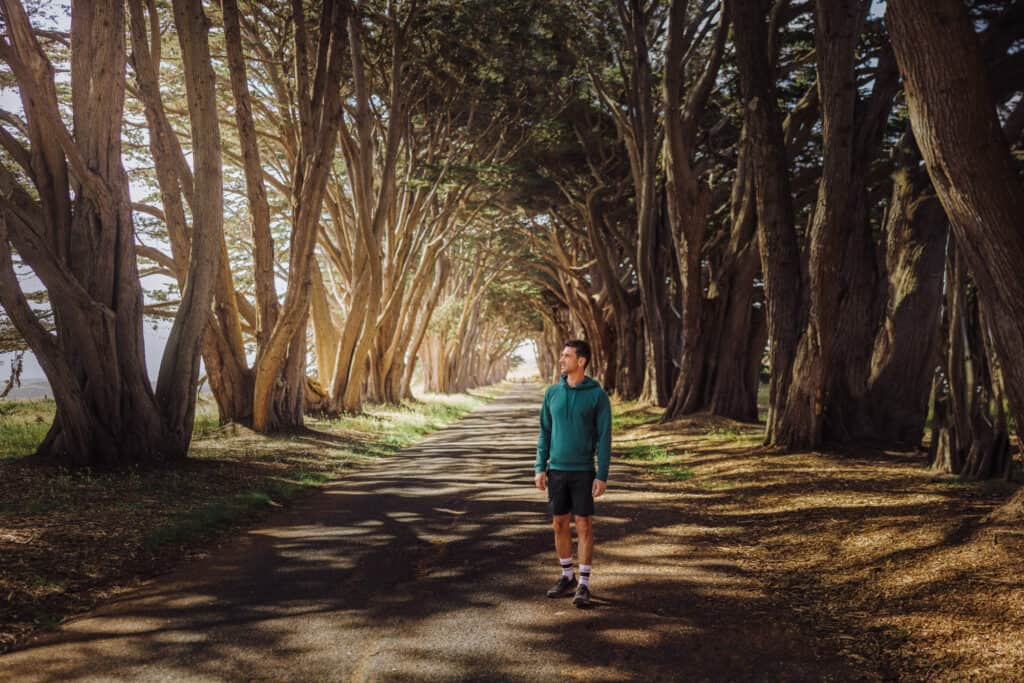
Check out our other posts about the California Coast
